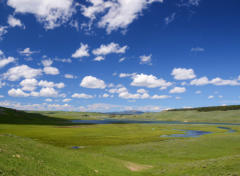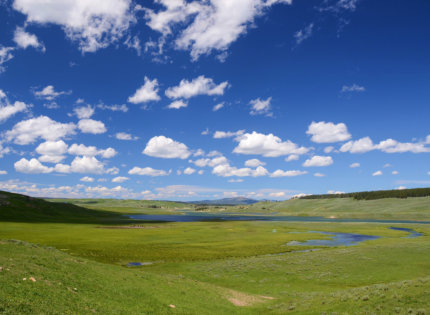
HISTORY ONLINE 24/7/365
WORLD WAR I
World War I in U. S. History 2
World War I, also known as The Great War, or The War to End All Wars, often gets littile attention as we study history, yet the impact of the war reshaped the world and set up the seeds of World War II. With the 100th anniversary of the war, historians and the public have begun to take a second look at the war, and to re-examie the many significant lessons it can teach us for today.Resources:
History Channel worldwar1.com National Geographic Kids-World War I page Library of Congress WWI page Special post--Baseball and World War I National Archives -- World War I page National World War I Memorial page at the WWI Centennial site Research your ancestors that were in World War One! CLICK HERE for access to draft records, service records, veteran's homes, and more at the National Archives! Read about Frank Buckles at the Smithsonial site Collections at the Woodrow Wilson Presidential Library & Museum in Staunton, VA Pop Culture of the War: As we discusssed in class, the popular entertainment of any era reflect the thoughts and feelengs of people living through that time. Here are a couple of videos, some of which we watched in class, that reflect people’s thoughts during the war. Over There was a popular patiotic song as people were enlisting and going to Europe: Toward the end of the war, soldiers had become very cynical, as the lyrics of this popular song, Hanging on the Old Barb Wire reflect: I highly suggest reading ALL QUIET ON THE WESTERN FRONT as well as watching either of the two filmed versions. The originial, released in 1930, featured special effects and camera techniques groundbreaking at the time, and many of the battle scene extras were actual veterans, lending a degree of realism. While the original is still under copyright, I was not aware that the CBS tv-movie version was in the public domain. In color with Richard Thomas and Earnest Borgnine, here is the modern, color version of ALL QUIET ON THE WESTERN FRONT: SOL Information: Reasons for the United States’ involvement in World War I • Inability to remain neutral • German submarine warfare (sinking of the Lusitania) • United States economic and political ties to Great Britain • The Zimmermann Telegram Major Allied Powers • British Empire • France • Russia (until 1917) • Serbia • Belgium • United States Central Powers • German Empire • Austro-Hungarian Empire • Bulgaria • Ottoman Empire United States leadership as the war ended • At the end of World War I, President Woodrow Wilson prepared a peace plan known as the Fourteen Points that called for the formation of the League of Nations, a peacekeeping organization. • The United States Senate did not ratify the Treaty of Versailles because of a desire to resume prewar isolationism. The United States did not become a member of the League of Nations. If you do not already know your 50 states, try some of the U. S. mapping games below!U.S. Mapping Games:
Click to start here with a simple tutorial Drag and Drop by Region Drag and Drop Click on the State Drag and Drop (Harder)

PHYSICAL REGIONS
Looking for the physical regions
of North America from the
Virgina Standards of Learning
for U. S. History I?




































HISTORY ONLINE 24/7/365
mrbower.com
WORLD WAR I
World War I in U. S. History 2
World War I, also known as The Great War, or The War to End All Wars, often gets littile attention as we study history, yet the impact of the war reshaped the world and set up the seeds of World War II. With the 100th anniversary of the war, historians and the public have begun to take a second look at the war, and to re-examie the many significant lessons it can teach us for today.Resources:
History Channel worldwar1.com National Geographic Kids-World War I page Library of Congress WWI page Special post--Baseball and World War I National Archives -- World War I page National World War I Memorial page at the WWI Centennial site Research your ancestors that were in World War One! CLICK HERE for access to draft records, service records, veteran's homes, and more at the National Archives! Read about Frank Buckles at the Smithsonial site Collections at the Woodrow Wilson Presidential Library & Museum in Staunton, VA Pop Culture of the War: As we discusssed in class, the popular entertainment of any era reflect the thoughts and feelengs of people living through that time. Here are a couple of videos, some of which we watched in class, that reflect people’s thoughts during the war. Over There was a popular patiotic song as people were enlisting and going to Europe: Toward the end of the war, soldiers had become very cynical, as the lyrics of this popular song, Hanging on the Old Barb Wire reflect: I highly suggest reading ALL QUIET ON THE WESTERN FRONT as well as watching either of the two filmed versions. The originial, released in 1930, featured special effects and camera techniques groundbreaking at the time, and many of the battle scene extras were actual veterans, lending a degree of realism. While the original is still under copyright, I was not aware that the CBS tv- movie version was in the public domain. In color with Richard Thomas and Earnest Borgnine, here is the modern, color version of ALL QUIET ON THE WESTERN FRONT: SOL Information: Reasons for the United States’ involvement in World War I • Inability to remain neutral • German submarine warfare (sinking of the Lusitania) • United States economic and political ties to Great Britain • The Zimmermann Telegram Major Allied Powers • British Empire • France • Russia (until 1917) • Serbia • Belgium • United States Central Powers • German Empire • Austro-Hungarian Empire • Bulgaria • Ottoman Empire United States leadership as the war ended • At the end of World War I, President Woodrow Wilson prepared a peace plan known as the Fourteen Points that called for the formation of the League of Nations, a peacekeeping organization. • The United States Senate did not ratify the Treaty of Versailles because of a desire to resume prewar isolationism. The United States did not become a member of the League of Nations. If you do not already know your 50 states, try some of the U. S. mapping games below!U.S. Mapping Games:
Click to start here with a simple tutorial Drag and Drop by Region Drag and Drop Click on the State Drag and Drop (Harder)

PHYSICAL REGIONS
Looking for the physical regions of
North America from the Virgina
Standards of Learning for U. S.
History I?



































































